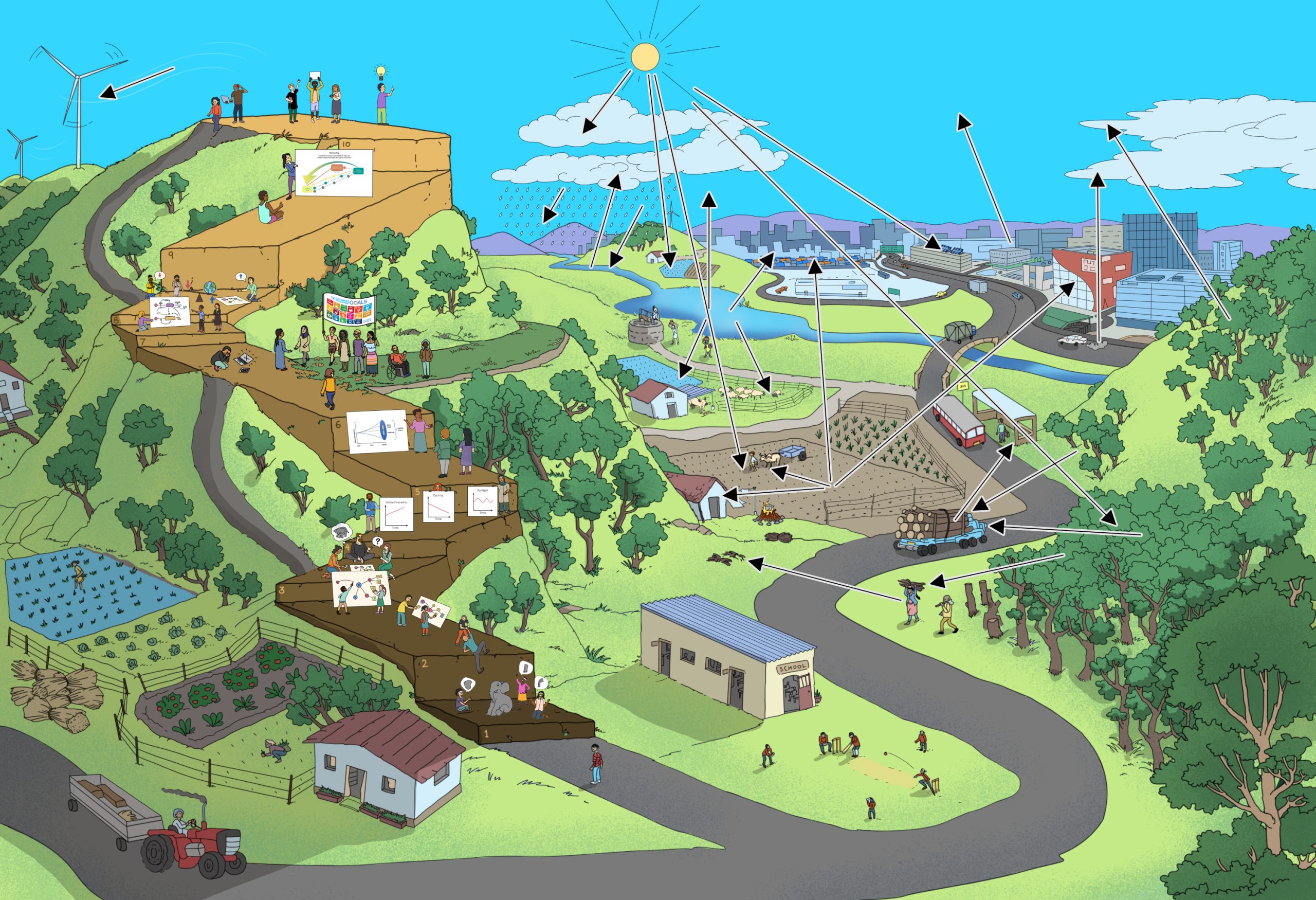Systems thinking is the ability to describe and/ or visualise a part of a complex reality, express that part of reality as a model, understand the model as a system, use the model to explain the behaviour of the system, anticipate the behaviour of the system, and evaluate its impacts on sustainable development, identify potential points of, and types of interventions, generate options to act, assess their impacts in the frame of sustainable development, and decide whether further actions are necessary or not.
1. What does this mean?
In this Step, learners analyse the decisions taken in Step 9, reflect if their intervention (related to the leverage point) and its impact on the system or subsystems, resulted in improved sustainability outcomes or whether further interventions are needed. In that case, they have to understand that they may need to review decisions taken in an earlier Step.
2. What is the aim?
To enable learners to
- Assess whether interventions in the system resulted in improved sustainability outcomes.
- Assess whether the choice of intervention in the system was appropriate to effect improved sustainability outcomes.
- Decide if further interventions are needed.
4. Activities, tasks and suggested learning methods
In Step 9 learners developed strategies to change a system in intended directions of SD. In this Step, they have to check if their idea or strategy really improves sustainability outcomes, and if not, they have to go back to Step 8.
As a preparatory task, some examples of well-intended actions resulting in unintended consequences that create other problems, may be shared.
The DDT Dilemma
DDT is probably the most famous and controversial pesticide ever made. An estimated 1.8 million tons of this inexpensive and historically effective chemical have been produced and applied worldwide since 1940. DDT came into use to protect soldiers from insect-borne diseases such as malaria and typhus during World War II. It remains a public health tool in parts of the tropics. The heavy use of this highly persistent chemical has, however, led to widespread environmental contamination and the accumulation of DDT in humans and wildlife. Though the intention was to protect human health, the use of DDT had unintended consequences of adverse impacts on the health of human being and other species.
The detrimental effects of pesticides on the environment were brought to public attention by American biologist and conservationist Rachel Carson in her 1962 book, Silent Spring. The book highlighted that the uncontrolled use of pesticides was harming and even killing not only animals and birds, but also humans. Its title was meant to evoke a spring season in which no bird songs could be heard, because they had all vanished because of pesticide abuse.
- To think through the consequences of the interventions planned in the previous Step, let groups of learners exchange their strategies (one person from the group may join the new group to explain the strategy).The task for each group is to imagine the application of the strategy developed by their partner group, and
- Check if the changes planned for, would really occur.
- Is the planned strategy adequate, or will other interventions also be necessary?
- Are there any unintended consequences, and will these improve sustainability behaviour or outcomes, or worsen the situation, and how?
- Let each group present their review to their partner group.
Ask learners what could be done if the strategies developed fail or may not work as intended. Encourage them to identify which step they need to go back to in order to review and correct their strategy.
Suggested learning methods are:
5. Conclusion
- Reflect on what is learnt, either by summarizing the activity or asking learners to do so.
- Ask the group to think about and share further questions about the object or situation.
- The answers to these further leading questions may be discussed in the next steps.
Illustration of staircase model for further leading questions
6. Suggested Final or Further Leading Questions
- 1.What is the use of systems thinking to you personally?
- Can you think of some situations in your life that you could apply systems thinking to, in favour of sustainable development?
7. Example
The theory and activity guidance in this step is illustrated with the topics of ‘cotton’ and ‘potato chips’.
Step 10 in the Jeans example


